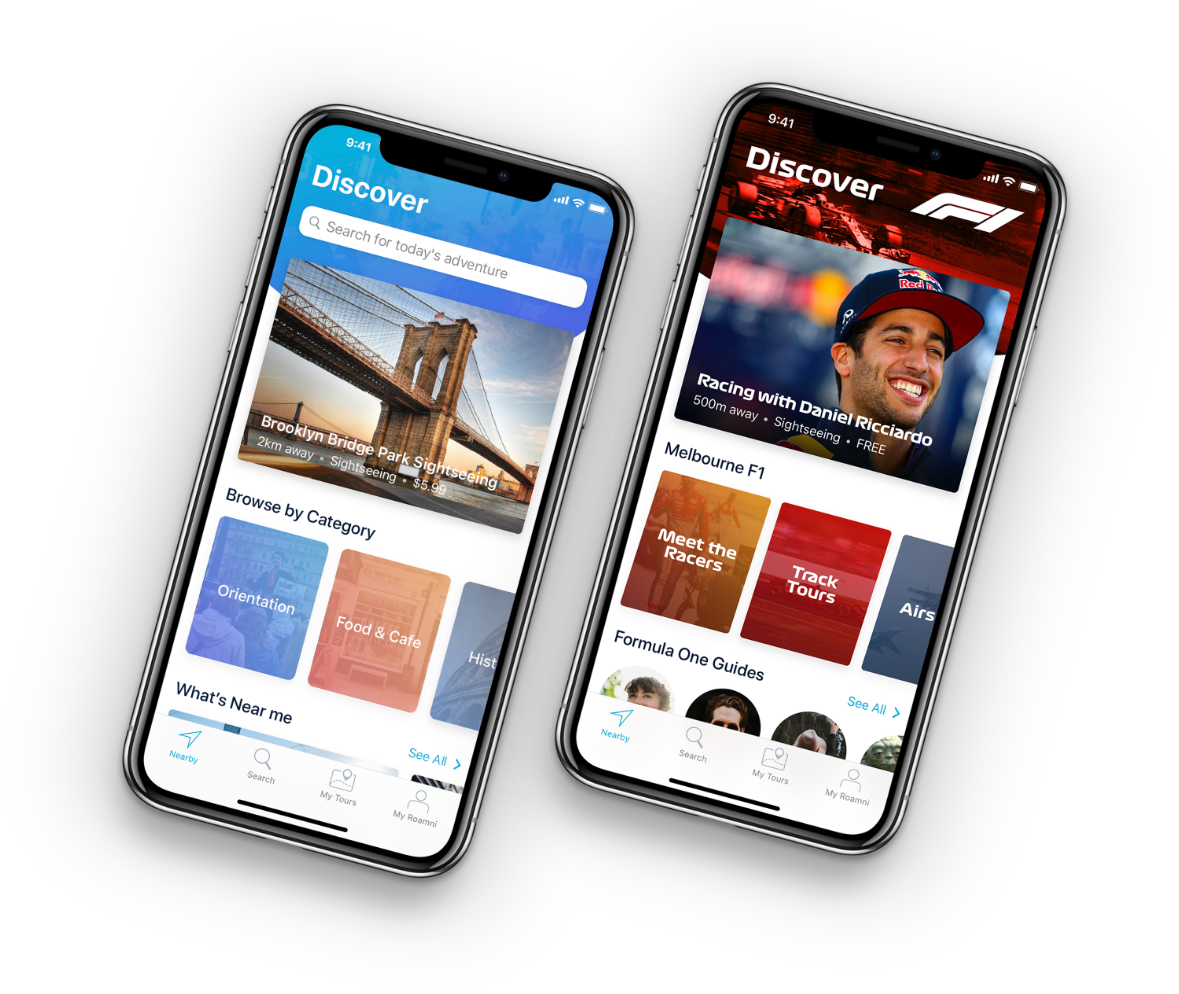5 Ways Founders Are Turning Digital Solutions into Passive Income Streams

Editor’s note: A guest author writes this article and doesn’t represent the official views or endorsements of our platform regarding any Appetiser Apps products or services mentioned. We value diverse perspectives and are pleased to share this guest contribution with our readers.
As a founder, you’re no stranger to hard work. You’ve likely spent countless hours building your business, developing products, securing funding, or navigating the ups and downs of scaling a startup. But what if your business could generate income without demanding your constant attention?
Digital solutions offer a great pathway to passive income. From mobile apps to SaaS platforms, there are now ways to create scalable and automated ways to make money in the background.
If you’re looking for ways to build sustainable passive income, here are five proven strategies to help you do just that.
Earn passive income through digital solutions
We’d all love to earn some passive income. Falling asleep knowing that you’re making money is something most, if not all of us aspire to, in some shape or form at least.
The good news for founders is that there are a few ways to do this through digital solutions. Whether it’s a mobile app, an online course, or a subscription-based platform, the right digital product can secure you a pretty penny without too much legwork in the long run.
What are digital solutions for passive income?
Think of digital solutions as assets that work for you, even when you’re not actively managing them. Similar to the ‘earn money while you sleep’ analogy we used above.
A few examples of passive digital income streams include:
- Ebooks. Share your knowledge and expertise by writing and selling ebooks on various topics.
- Mobile apps. Apps that earn through subscriptions, ads, or in-app purchases.
- Stock photos. Graphics and music: If you are creative, sell your photos, graphics, or music online.
- SaaS platforms. Automated software tools that solve real-world problems.
- Digital products. Online courses, templates, and premium content people pay for.
- Marketplaces. Platforms that connect buyers and sellers while you take a cut.
The main benefit is that they are essentially self-running. Unlike a traditional business that requires you to be present every day, a well-built digital product keeps making money without constant involvement.
Why passive income models support sustainable growth
One of the main reasons why many startups struggle is that they rely on unreliable revenue streams.
All it takes is losing a major client on retainer, one bad financial quarter, a missed funding round, or even just an unexpected market shift to throw a real spanner in the works for your business. But, if you have a passive income stream, most of those worries take a back seat. Digital passive income models provide more financial stability and essentially help you sleep better at night. Here’s why:
- Revenue comes in 24/7. There’s no need to trade hours for dollars.
- Scalability is built-in. A digital product can be sold an unlimited number of times without extra production costs like renting a warehouse to store your stock or simply ordering physical stock.
- Automation does the heavy lifting. AI, chatbots, and digital systems keep things running smoothly, so you don’t have to.
If you can find the right product for your digital product for your business, that is. This part is essential because it’s one thing having a digital product but having one that aligns with your brand and business is the golden ticket.
Let’s take a look at some of the most popular ways founders are turning digital solutions into passive income dreams.
1. Build subscription-based mobile apps
Starting with sub-based mobile apps. These have become one of the most reliable ways for founders to generate passive income. The main reason is that these apps create a steady, predictable revenue stream – something every entrepreneur dreams of.
There are a few reasons why they work well. First, unlike one-time purchases, subscriptions keep customers engaged and paying regularly.
This model works particularly well because you can find a group of people (or a niche) willing to pay to keep using your app. For example, running enthusiasts (Strava), language learners (Duolingo), or mindfulness seekers who might use Calm – more on that shortly.
Then, you can offer tiered pricing depending on what people are willing to pay for. You might have free, basic, and premium tiers, all coming with their own separate benefits.
As long as your app is routinely updated and keeps giving your audience what they want, they’re far more likely to keep paying.
Calm is a Great Example of This
If you haven’t heard of Calm, it’s a wellness and meditation app that started as a simple tool for relaxation but exploded in popularity through its subscription-based content.
Calm offers things like guided meditations, sleep stories, and breathing exercises to those looking to embrace mindfulness and generally gain a sense of calm, wherever they are. Today, Calm is crushing it, and has turned a niche audience into millions of paying subscribers.
The takeaway? Focus on retention. A well-designed app with valuable, fresh content keeps users engaged and paying month after month.
2. Monetize through in-app purchases (IAPs)
Another great way to turn a mobile app into a passive income machine is through in-app purchases (IAPs). These let users pay for extra features, premium content, or digital goods – all without needing a subscription.
Why do IAPs work so well? Simple. Instead of forcing users into a commitment, they give people the freedom to spend as much (or as little) as they want. Some might just pay once, while others – especially power users – end up spending way more than they would on a flat fee.
How to make in-app purchases work
The key thing to remember is that not every app is a good fit for IAPs, but the ones that succeed usually follow these key strategies:
- Offer exclusive content or tools. Think premium filters (VSCO), extra storage (Google Drive), or bonus workout plans (MyFitnessPal).
- Use microtransactions. Small, low-cost purchases (like skins in gaming apps) encourage users to buy more frequently.
- Balance between free and paid features. The base app should be valuable enough to hook users, but premium content should be tempting enough to convert them.
The market is growing fast
Currently, in-app purchases are a massive market. Global spending on IAPs is expected to hit $340 billion by 2027. That’s a big deal for founders looking to build apps with sustainable revenue.
The most important thing to remember is to make your paid features worth it. If users see real value, they’ll happily spend again and again.
3. Launch automated SaaS platforms
So, if you’re looking for a truly hands-off way to earn passive income, Software as a Service (SaaS) is one of the best options. With a well-built SaaS product, you can serve businesses or consumers without constantly being involved.
The biggest pull of SaaS is automation. A well-designed platform handles everything, from onboarding and payments to customer management. It frees up a ton of time so you can focus on the more important aspects of your business.
Why SaaS works for passive income
The best SaaS businesses run with minimal effort for a few big reasons. Mainly, they solve a specific problem. And the more niche, the better. Think project management (Trello) or email marketing (Mailchimp). If you’ve used either of these, you’ll know how much easier they can make your life.
You should also consider charging recurring fees. In a similar vein to monthly mobile subscriptions, securing monthly or yearly payments means steady, predictable revenue.
If you’re looking to make this even easier, you could consider automating your customer service with things like chatbots, help centres, and AI-powered support to keep things running smoothly.
A great example is VR solutions for industries like real estate, retail, and education. These platforms automate 3D scanning and visualization, which is helpful for businesses looking to show spaces without in-person visits.
This kind of SaaS business is scalable, automated, and constantly generating revenue, making it an ideal passive income stream.
4. Sell digital courses via mobile platforms
This is something that has become incredibly popular over the last decade or so. If you have expertise in a high-demand field, selling digital courses can be an incredibly scalable way to generate passive income.
Once the content is created, your course can be sold over and over again with little extra effort. As long as the content you’ve created is useful, of course.
Why digital courses work
Unlike traditional coaching or consulting, courses let you:
- Teach once, earn forever – Record it once, sell it indefinitely.
- Reach a global audience – No need to limit yourself to a single location or market.
- Automate everything – Okay, maybe not everything, but everything that can logically and safely be automated. So, things like your course platforms, payment windows, access, and even marketing.
What makes a great digital course?
Regardless of the industry you’re in or the product you’re selling, the best-selling courses usually have three things in common:
1. A trending topic
At the moment, digital marketing, coding, AI, or wellness are all booming industries. We don’t think any of these topics will be hiding from the limelight anytime soon.
2. Evergreen content
Evergreen content is crucial for long-term income streams. The courses that stay relevant (or can be updated easily) are much easier to keep selling long-term. There’s nothing bad about having to keep updating your courses, but the less you need to do this, the more passive (and better) it is.
3. Smart automation
AI-driven recommendations, auto-graded quizzes, and drip-fed lessons all keep students engaged.
Udemy’s self-paced learning model is nailing this
Platforms like Udemy have built entire business models around self-paced digital courses. Instructors create content once, and Udemy handles everything from hosting to payments, allowing course creators to earn ongoing revenue with minimal upkeep.
5. Build digital marketplaces for niche products
Finally, digital marketplaces are still one of the best ways to generate passive income. Unlike a traditional eCommerce app, where you handle inventory and logistics, a marketplace brings in both buyers and sellers, while you take a cut of every transaction.
There are a few platforms that do this well. Etsy or Gumtree are some of the top companies in this area. Both have done well because they don’t sell products themselves. Instead, they provide a platform for others to sell theirs.
Plus, once the marketplace is set up, the system largely runs itself, with automation handling listings, payments, and customer interactions.
But it’s not just about having a solid platform that runs efficiently. As we discussed before, you’ll also need to nail a niche.
It’s unlikely you’ll want to go head-to-head with the likes of Amazon. So, think about what your business could offer as a product and go with that. This could be vintage art, rare collectibles, custom-built gaming accessories, or something else within this niche.
Remember, people are always looking for unique, hard-to-find items, and they’re often willing to pay a premium for them, especially if you market them well.
You’ll also need trust
Of course, trust is everything in a marketplace. More specifically, trust is crucial to get people to buy your products!
So, you’ll want to include things like verified reviews, testimonials and secure payment portals. If you don’t have these in place, you risk readers landing on your website and bouncing away if they feel your service or payment methods can’t be trusted.
The easier and more trustworthy their experience, the more your marketplace can grow. All without you needing to micromanage it.
Turn digital innovation into sustainable income
Whether through subscription-based apps, in-app purchases, SaaS platforms, online courses, or digital marketplaces, the key to success lies in scalability and automation. The more your product can run itself, the more freedom you gain.
But here’s the thing: passive income isn’t truly passive at the start. Every successful digital product requires upfront effort – market research, development, and strategic positioning. The difference is, that once it’s built and optimized, it continues to generate revenue with far less hands-on involvement.
So, what’s next? If you’re serious about building a sustainable, low-maintenance income stream, now is the time to take action. Identify which model aligns best with your expertise and goals, start mapping out your digital product, and invest in the right technology to bring it to life. The sooner you start, the sooner your business can begin working for you – even while you sleep.
The future of passive income isn’t about working harder. It’s about working smarter.

About the Contributing Author
Maxine is Co-founder and Head of Content at Hive19, specializing in growth marketing for brands across sectors including fintech, SaaS, eCommerce, and disruptor startups.
Maxine’s passions are providing strategy, building authority for clients, and creating actionable content that audiences value.

Maria Krisette Lim is a Content Marketing Specialist with 14 years of experience producing web and print ad content. Krisette has a BSBA degree, major in Business Management and Entrepreneurship. When she’s not tinkering with words and punctuation, she’s either curled up with a book while sipping hot tea, playing with her toddler, or tinkering with website builders.


